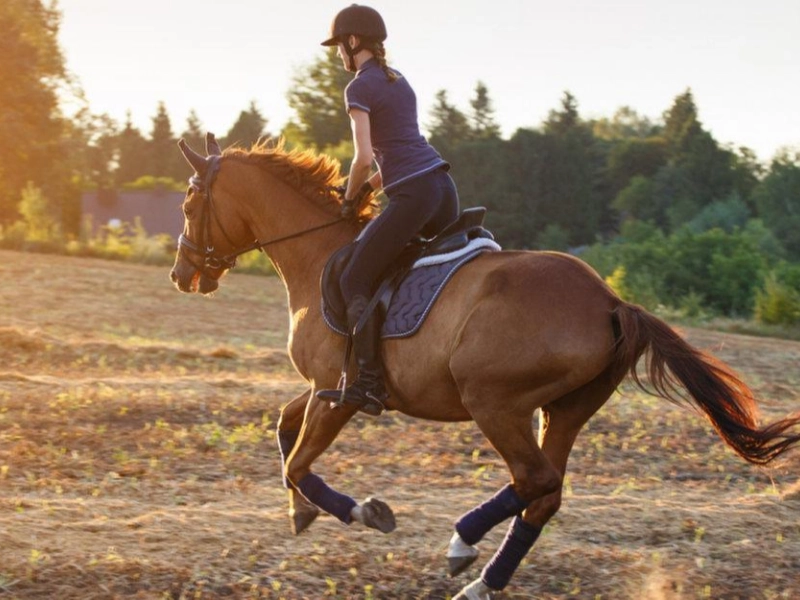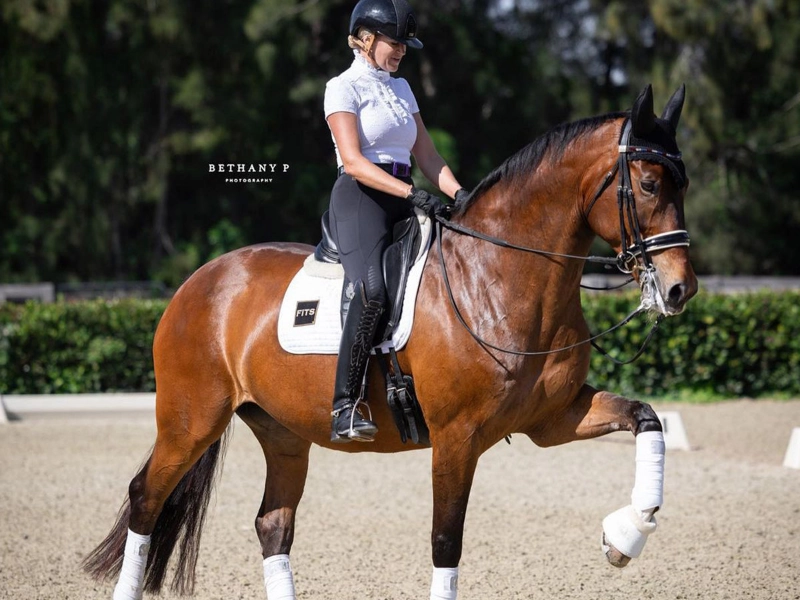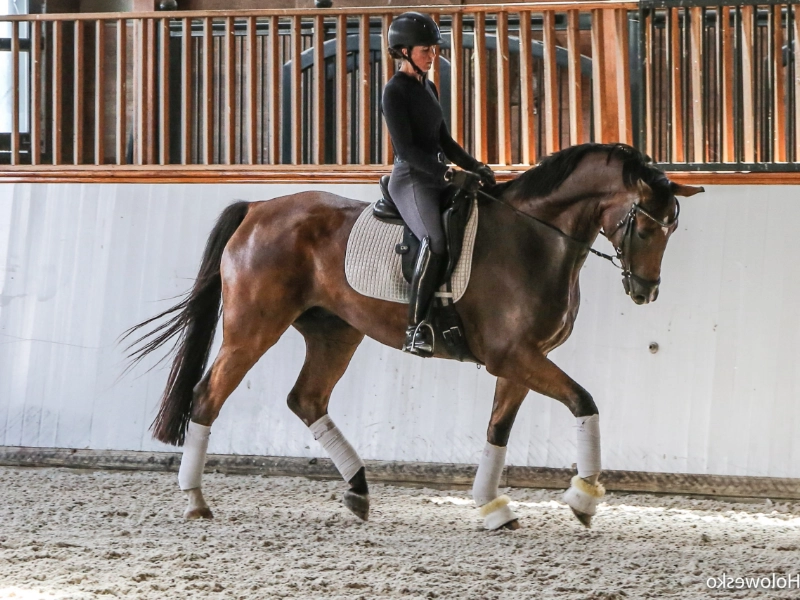Though they provide inherent hazards, equestrian activities are exciting and fulfilling. Given the range of accidents riders and horses can sustain, equestrian community members give safety first importance. Ensuring the welfare of the rider and the horse depends on putting good injury prevention techniques into use. From correct training and equipment to awareness and emergency preparedness, this article investigates main techniques to reduce injuries.

 Effective prevention of injuries in equestrian sports is mostly dependent on appropriate training and instruction. Riders should look for guidance from licenced trainers stressing skill and safety. Minimizing the risk of falls and mishaps depends on knowing the foundations of riding—balance, posture, control, etc.
Apart from riding abilities, riders should also educate themselves regarding behavior and maintenance of horses. Knowing how to spot stress or discomfort in a horse helps one avoid mishaps before they start. Understanding equine anatomy and frequent health issues will help riders spot such problems early on, therefore preserving the health and injury-free status of horses.
Moreover useful are frequent training courses emphasizing safety procedures. Riders should learn how to manage unanticipated circumstances including a horse spooking or becoming uncontrolled and practice emergency dismounts. Riders who are ready for several situations can react fast and deliberately, therefore lowering their chance of harm.
Effective prevention of injuries in equestrian sports is mostly dependent on appropriate training and instruction. Riders should look for guidance from licenced trainers stressing skill and safety. Minimizing the risk of falls and mishaps depends on knowing the foundations of riding—balance, posture, control, etc.
Apart from riding abilities, riders should also educate themselves regarding behavior and maintenance of horses. Knowing how to spot stress or discomfort in a horse helps one avoid mishaps before they start. Understanding equine anatomy and frequent health issues will help riders spot such problems early on, therefore preserving the health and injury-free status of horses.
Moreover useful are frequent training courses emphasizing safety procedures. Riders should learn how to manage unanticipated circumstances including a horse spooking or becoming uncontrolled and practice emergency dismounts. Riders who are ready for several situations can react fast and deliberately, therefore lowering their chance of harm.
 In equestrian sports, injury prevention depends on choosing suitable equipment. This covers not just the rider's gear but also the horse's tack. The comfort and performance of the horse depend on a well-fitted saddle and bridle; badly fitting equipment can cause pain and higher risk of damage.
Riders should make good investments in premium protection gear like helmets, body protectors, and suitable shoes. A licensed riding helmet is non-negotiable; it greatly lowers the head injury risk should a fall occur. Particularly in disciplines like eventing or jumping where falls are more prevalent, body coverings can offer further safety.
Equally vital is routinely maintaining and examining equipment. To be sure saddles, bridles, and other tack are in good shape, look for wear and tear on them. Any broken equipment should be fixed or replaced right once to stop mishaps that can cause injuries.
In equestrian sports, injury prevention depends on choosing suitable equipment. This covers not just the rider's gear but also the horse's tack. The comfort and performance of the horse depend on a well-fitted saddle and bridle; badly fitting equipment can cause pain and higher risk of damage.
Riders should make good investments in premium protection gear like helmets, body protectors, and suitable shoes. A licensed riding helmet is non-negotiable; it greatly lowers the head injury risk should a fall occur. Particularly in disciplines like eventing or jumping where falls are more prevalent, body coverings can offer further safety.
Equally vital is routinely maintaining and examining equipment. To be sure saddles, bridles, and other tack are in good shape, look for wear and tear on them. Any broken equipment should be fixed or replaced right once to stop mishaps that can cause injuries.
 Preventing injuries in both horses and riders depends on correct warm-up and cool-down practices. A complete warm-up lowers the risk of strains and sprains by priming the horse's muscles and joints for activity. Before mounting, riders should begin with groundwork to evaluate the horse's temperament and condition.
Usually, a warm-up consists in mild stretching and progressive intensity increase. Spend at least ten minutes walking the horse; then, under control, trot and canter. This systematic method helps to release muscles and boost circulation, therefore preparing the horse for more rigorous activity.
In a same vein, a cool-down program promotes recuperation and helps to avoid stiffness. Let the horse walk for ten to fifteen minutes following a workout to progressively reduce its heart rate. To release stress and lower their chance of post-ride injuries, riders can also practice stretches and relaxation exercises. Developing these exercises helps not just with physical fitness but also strengthens the relationship between rider and horse.
Preventing injuries in both horses and riders depends on correct warm-up and cool-down practices. A complete warm-up lowers the risk of strains and sprains by priming the horse's muscles and joints for activity. Before mounting, riders should begin with groundwork to evaluate the horse's temperament and condition.
Usually, a warm-up consists in mild stretching and progressive intensity increase. Spend at least ten minutes walking the horse; then, under control, trot and canter. This systematic method helps to release muscles and boost circulation, therefore preparing the horse for more rigorous activity.
In a same vein, a cool-down program promotes recuperation and helps to avoid stiffness. Let the horse walk for ten to fifteen minutes following a workout to progressively reduce its heart rate. To release stress and lower their chance of post-ride injuries, riders can also practice stretches and relaxation exercises. Developing these exercises helps not just with physical fitness but also strengthens the relationship between rider and horse.
Prevention of injuries depends on knowledge of the riding surroundings. Before riding, riders should evaluate their surroundings in search of possible hazards include uneven ground, barriers, or other animals. Knowing the particular hazards connected to various surroundings—in an arena or on a trail—allows riders to decide on their activities with knowledge. Safety also depends much on the state of the weather. Riding performance can be impacted by rain, snow, or excessive heat as well as by horses. Riding in damp circumstances, for example, might result in slick surfaces, therefore raising the likelihood of falls. Based on the weather, riders should modify their plans; choose indoor venues in bad conditions or postpone rides when needed. Keeping a safe riding location is also absolutely vital. Check arenas and paths for risks often; make sure gates and fence are strong. Encouragement of a safe culture among other riders helps to create a supportive community aimed at injury avoidance, therefore making equestrian sports safer for all those engaged in them.
Accidents still happen notwithstanding the finest preventive measures. Minimizing the effect of injuries depends on one being ready for crises. Always carrying a first aid kit with bandages, antiseptics, and ice packs, riders should be sure it is easily accessible. Just as crucial is knowing how to react should an injury arise. Basic first aid procedures should be acquainted to riders, hence they might think about enrolling in a first aid course designed especially for equestrian events. In an emergency, knowing how to evaluate injuries, stabilize a rider or horse, and signal for aid can make all the difference. Furthermore improving safety is a well-defined emergency plan. Riders should let other people know their intentions, including emergency contact details and planned meeting places. Being ready for unanticipated events can assist to guarantee that the rider and the horse get quick treatment, therefore lowering the degree of damage and encouraging a safer riding environment.